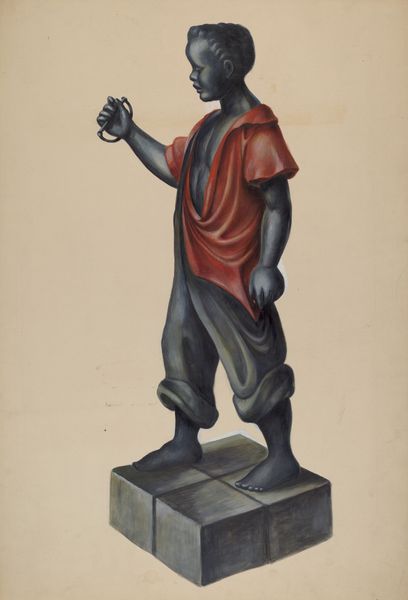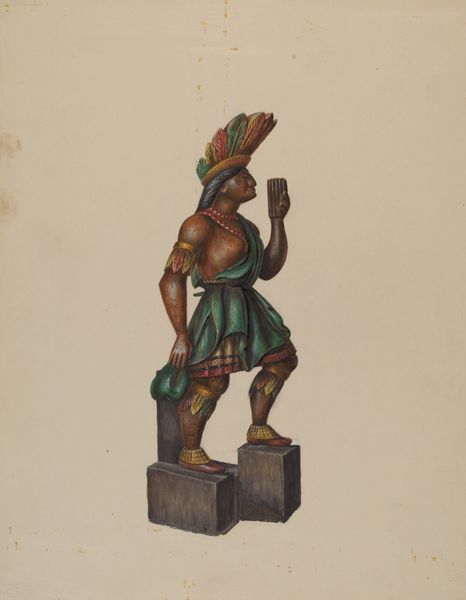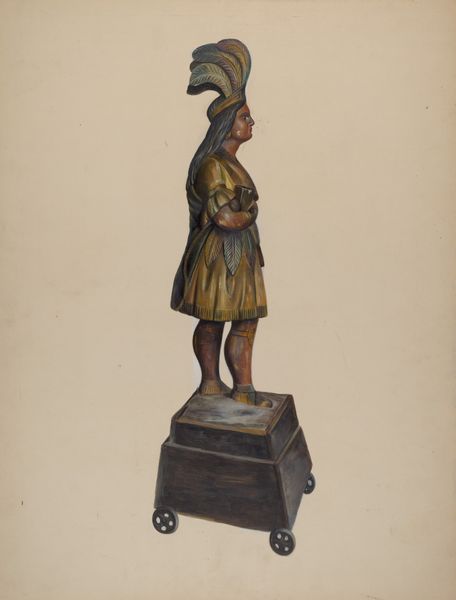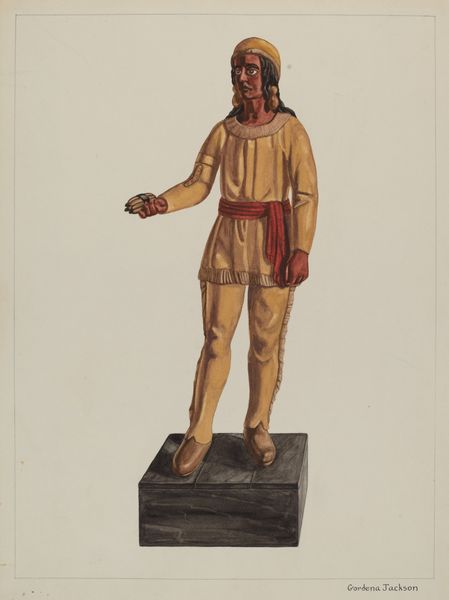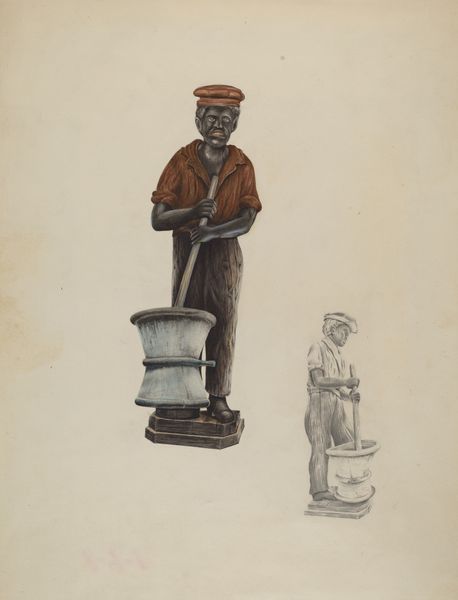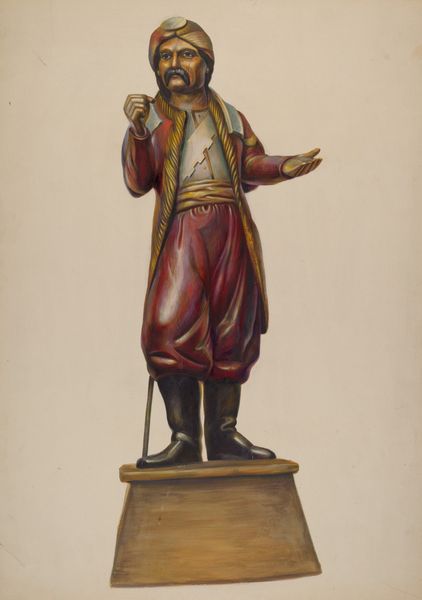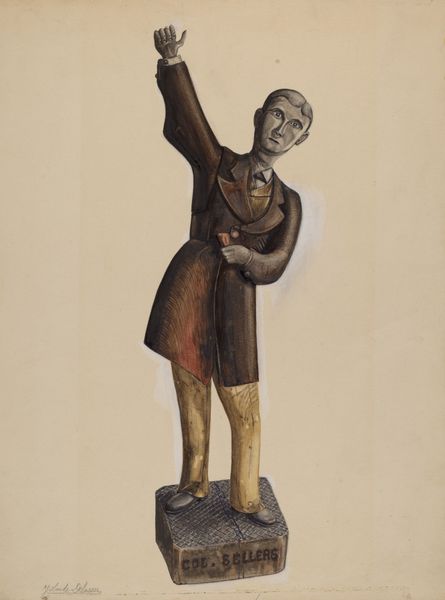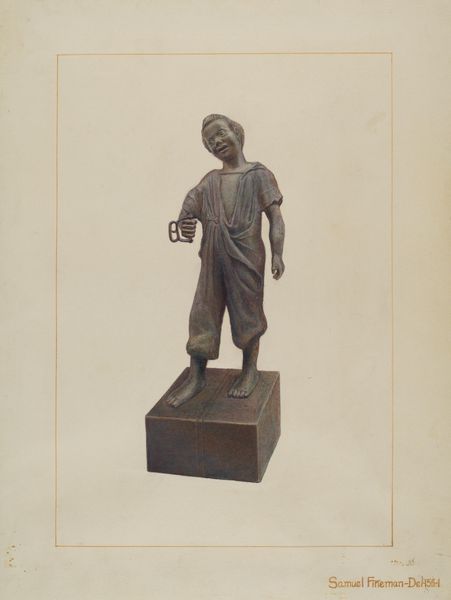
drawing, coloured-pencil, watercolor
#
portrait
#
drawing
#
coloured-pencil
#
water colours
#
figuration
#
oil painting
#
watercolor
#
coloured pencil
#
folk-art
#
watercolour illustration
#
watercolor
Dimensions: overall: 35.5 x 24.5 cm (14 x 9 5/8 in.)
Copyright: National Gallery of Art: CC0 1.0
Curator: Harry Jennings' "Iron Hitching Post," circa 1937, renders a potent image with colored pencil and watercolor. My initial impression is one of stark, almost unsettling stillness. The figure, perched on that vivid green base, it almost feels frozen in time, or perhaps observation. Editor: The colors are certainly striking, almost discordant. Given the probable history of such lawn ornaments, what sociopolitical commentaries can we explore? The figure stands rigid and formal on the bright green pillar. It feels weighty, even burdened. The use of color only amplifies that reading. Curator: Absolutely. We can situate this piece within the landscape of American folk art and vernacular imagery. These "lawn jockeys," as they are sometimes known, were initially meant to depict enslaved African Americans as subservient. Jennings' work presents an opportunity to analyze the ongoing reverberations of such imagery within both history and contemporary cultural dialogues regarding representation and racial identity. What does it mean to represent such an image? Is it restorative, celebratory, or perhaps an exercise in documentation, to witness the life cycle of discriminatory objects? Editor: The symbol of the ring evokes both restraint and expectation, a complex and potent visual motif for the subjugation of a class. What resonates deeply is the object's transformation across generations; from object of racist nostalgia into an artifact scrutinized and recontextualized, sometimes even reclaimed as defiant statement of heritage by Black artists and communities. Is this an artifact that can ever be devoid of a dark narrative? Curator: It is difficult to detach it from that past. This illustration is a form of critical archiving. Jennings gives the figure its space, obliging us to look, consider, discuss and potentially, dismantle the enduring legacies of a discriminatory history that is also deeply coded in popular culture. This illustration, therefore, acts as an invitation to engage with painful yet vital histories. Editor: An object laden with shadows and unspoken stories, rendered into image... Jennings encourages us to reckon with the symbols, perhaps prompting us to seek a path beyond their painful origins and evolution. Thank you, curator, for adding important dimensions to my interpretation.
Comments
No comments
Be the first to comment and join the conversation on the ultimate creative platform.



